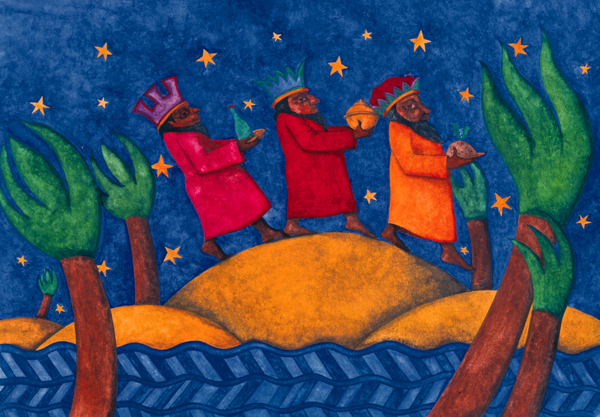Image Details

Photo courtesy of The Grand Design, Leeds, England/Superstock.
Bearing gifts for the “child who has been born king of the Jews” (Matthew 2:2), the three magi travel over hill and through dale, past trees waving in the evening breeze and along a flowing river in British artist Tom Clark’s colorful 1994 rendering, We Three Kings. With their gold, frankincense and myrrh, these Eastern astronomers—the term “magi” refers to Persian scholars and astronomers—head unfalteringly toward Bethlehem, following “the star that they had seen at its rising until it stopped above the place where the child was” (Matthew 2:9).
In the accompanying article, author Simo Parpola writes that the star was probably an unusual conjunction of two planets, Jupiter and Saturn, in 7 B.C.E. (see the sidebar to this article). For the magi, the appearance of Saturn, identified in Babylonian astrology as the star of the king, would have signaled the advent of a new leader. Jupiter, the star of the supreme god, would have indicated that this king was divine.
